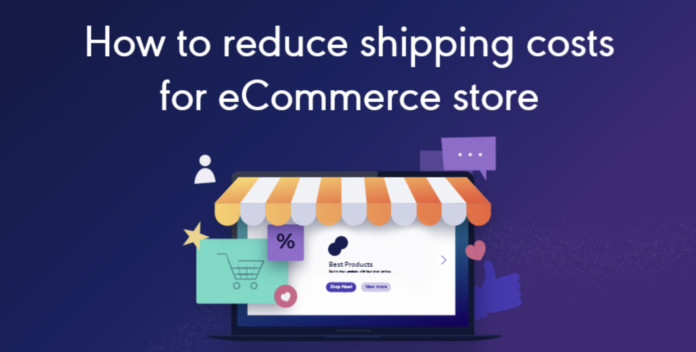eCommerce has been thriving across the globe, with significant changes in consumer behaviour and the penetration of new-age technology into every aspect of human life. The size of the worldwide eCommerce market, which was estimated at USD 9.09 trillion in 2019, is speculated to increase at a CAGR of 14.7% from 2020 to 2027.
Based on eCommerce sales, India will have the second-fastest economic growth in the Asia-Pacific region this year, only after the Philippines. By the year 2025, steady double-digit growth is expected. In terms of retail eCommerce sales, it will continue to rank fourth in the Asia-Pacific region this year, trailing only China ($2,784.74 billion), Japan ($168.70 billion), and South Korea ($142.92 billion).
Given the boom in online shopping, new entrepreneurs and startups are entering the field of eCommerce, and as beginners, it becomes crucially important for them to manage the cost of running an online store in the most economical way possible.
What’s the Cost of Running an eCommerce Store?
There are several costs associated with running an eCommerce store. These can include the cost of goods sold, shipping and handling, payment processing fees, and website hosting fees. Additionally, there may be other marketing and advertising expenses.
The cost of goods sold is typically the most significant expense for an eCommerce business. This includes the price of the products themselves, as well as any packaging and shipping costs. Shipping and handling fees can also add up, especially if you are shipping internationally. Payment processing fees can vary depending on the payment method used, but they are typically a few percentage points of the total sale. Website hosting fees will depend on the size and complexity of your website but can start as low as $10 per month.
Other marketing and advertising expenses can include things like social media marketing, search engine optimisation, and email marketing. These costs can vary greatly depending on the size and type of business, so it’s essential to do some research to find what will work best for you.
Overall, the cost of running an eCommerce store can vary greatly depending on the size and scope of your business. However, there are a few key expenses that all companies will need to consider. By keeping these costs in mind, you can create a budget and plan for how to best grow your eCommerce business.
Some tips which will help you in reducing the cost of your eCommerce store
- Minimal product returns
The majority of online store returns take place via mail, usually at no cost to the customer. The entire cost to online sellers is increased by fees connected with processing the item after receipt, such as reselling the item, in addition to transportation costs. Customer refunds are becoming the biggest danger to all sizes of online brands. For reducing product returns:
- Provide the consumer with comprehensive product information
- Request customer feedback and acknowledge it
2. Spend less on inventory
Here are some excellent strategies for cutting eCommerce inventory expenditures.
A) Use a reliable scanning system: A good inventory management technique is to scan products anytime they are received, transferred, shipped, or modified in any way.
B) Drop shipping: Because drop shipping does not need inventory purchases, eCommerce companies can provide a wide range of products to clients without having to worry about inventory levels.
3. Delegate crucial eCommerce operations
eCommerce businesses wishing to cut operating costs should determine whether essential company processes can be outsourced to a logistics aggregator and should also think about whether outsourcing would save them money.
The following eCommerce tasks can be outsourced:
- Listing, optimisation, and catalogue management
- Seller onboarding. A professional can make it simple for eCommerce platforms to onboard seasoned sellers by outsourcing seller onboarding to a different sector.
- eCommerce platforms can develop a strong network of manufacturers by outsourcing their sourcing and manufacturing operations to industry experts.
- Customer service. To provide excellent customer service, one must have a thorough awareness of numerous indicators, including NPS, CSAT, and attrition rate.
4. Streamline the administration of the supply chain
One of the easiest methods to lower operational costs for an eCommerce firm is to streamline the supply chain and distribution process.
Here are some of the tips for streamlining supply chain management that works:
- Seek out reputable vendors
You can skillfully supply high-quality goods by selecting reputable suppliers.
- Employ centrally located management software
The systems for managing your inventory, finances, and sales may all cooperate if you use the right software. Different business departments may safely access crucial international, financial, and consumer data thanks to centralised management software.
- Reduce delivery expenses
The majority of clients expect prompt delivery of their products and affordable shipping rates from you. Local warehouse fulfilment centres might be helpful in this situation because they lower eCommerce shipping costs.
5. Employ technology
The demand and complexity increase as eCommerce businesses grow, turning the systems more and more ineffective. eCommerce automation conducts operations, processes, and campaigns within your company efficiently and at precisely the right time, reducing errors and processing time.
6) Utilize eco-friendly packaging
Using a superior quality packaging material is highly important for enhancing your brand value, which should also be affordable and doesn’t take a toll on your budget. Most preferred packaging materials such as cardboard boxes and corrugated boxes are easily available at wholesale rates, which are not only reliable but also sustainable.
Conclusion
If you are starting afresh in the eCommerce industry, revenue generation has to be your priority, but you cannot sideline the need for adopting measures to cost-effectively manage the expense of running your eCommerce store.
In such a case, hiring a logistics aggregatorthat can efficiently manage your entire logistics operation and warehouse fulfilment can turn out to be a masterstroke. The country’s leading shipping aggregators such as NimbusPostprovide an AI-backed logistics software solution for all MSMEs and large-scale businesses in domestic and international markets, at the most reasonable shipping rates.

